Retro Corner: SSX Tricky
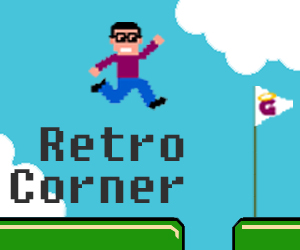 Game: SSX Tricky (2001)
Game: SSX Tricky (2001)
Developer: EA Canada
Publisher: EA Sports BIG
Originally Released on: PlayStation 2, Xbox, Gamecube
Snowboarding games began to rise to prominence in the late 1990’s, as the sport started to enter the mainstream. Titles such as Cool Boarders and 1080 Snowboarding had enjoyed great success on the previous console generation, but the hardware limitations meant that the speed and adrenaline of a downhill race was never re-created in an entirely pleasing way that captured the adrenaline and occasion of a big racing meet.
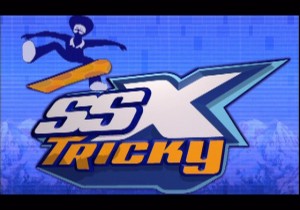 In time for the launch of the PlayStation 2, the newly-christened EA Sports BIG studio put together the game SSX (short for Snowboard Super Cross). Being the launch title for a development label that would specialise in extreme sports or arcade versions of traditional ones, snowboarding was a good place to start. The title featured over-the-top jumps, special moves and bright, colourful courses, which made the game more visually exciting than a regular snowboard title may have been. The game was loved by critics, but unfortunately never sold very well. It failed to connect with the audience in a major way, and the game never fulfilled its potential.
In time for the launch of the PlayStation 2, the newly-christened EA Sports BIG studio put together the game SSX (short for Snowboard Super Cross). Being the launch title for a development label that would specialise in extreme sports or arcade versions of traditional ones, snowboarding was a good place to start. The title featured over-the-top jumps, special moves and bright, colourful courses, which made the game more visually exciting than a regular snowboard title may have been. The game was loved by critics, but unfortunately never sold very well. It failed to connect with the audience in a major way, and the game never fulfilled its potential.
Enter SSX Tricky. The sequel came along and took everything that was good about the first game, and ramped it up even further. Playable characters were more outrageous and in your face, such a the ginger-afroed cover star, featuring voices from a talented Hollywood cast. The game also featured a lot of licensed music – such as the title track “It’s Tricky” by Run-DMC.
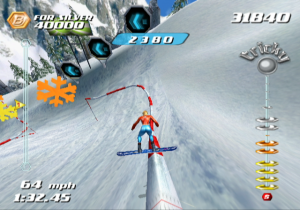 These features made the title stand out instantly as a game with character, and made it much easier to market, with it having a much stronger visual and audio presence. When you added to that the extra turbo power-up boosts, Uber moves and Rivalries, the game had a lot more unique features to offer than first time round; things that would make the game stand out against the competition. The zany cast and high-tempo music created the perfect atmosphere for some intense racing action, but also provided some comedic relief in the voice acting and character models. Having this design did make the game more recognisable and accessible to new players.
These features made the title stand out instantly as a game with character, and made it much easier to market, with it having a much stronger visual and audio presence. When you added to that the extra turbo power-up boosts, Uber moves and Rivalries, the game had a lot more unique features to offer than first time round; things that would make the game stand out against the competition. The zany cast and high-tempo music created the perfect atmosphere for some intense racing action, but also provided some comedic relief in the voice acting and character models. Having this design did make the game more recognisable and accessible to new players.
Tracks from the first game were re-built and re-interpreted to allow for more exciting and dynamic races. You might be racing on a fairly standard looking course, or you could be crashing through ski lodges and sliding down glaciers. The slightly out-of-this World courses made the game larger-than-life, and meant that at no time were you becoming bored by the simplicity of the track; there was always a hazard to be aware of or a shortcut to look out for.
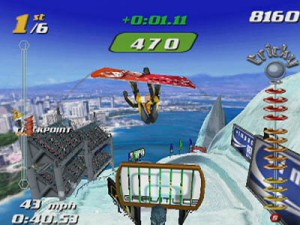 The real feature that made the game more fun to play however was the addition of Uber moves. As you race successfully, your boost bar would fill up. Fill this to its entirety and the player is granted the ability to pull of an Uber move. These moves are crazy, unrealistic ones, such as the rider taking his feet off the board and holding it behind his head, whilst spinning around, things you would never see in another snowboard title. As well as being visually stunning, a successful Uber move rewards the player with infinite boost for a short time, so they can whizz ahead of their competition. Do this six times, and fill the TRICKY bar, and you will be boosting forever!
The real feature that made the game more fun to play however was the addition of Uber moves. As you race successfully, your boost bar would fill up. Fill this to its entirety and the player is granted the ability to pull of an Uber move. These moves are crazy, unrealistic ones, such as the rider taking his feet off the board and holding it behind his head, whilst spinning around, things you would never see in another snowboard title. As well as being visually stunning, a successful Uber move rewards the player with infinite boost for a short time, so they can whizz ahead of their competition. Do this six times, and fill the TRICKY bar, and you will be boosting forever!
This created a new atmosphere where as well as trying to find the best racing line and make tight turns, players also competed against one another to out-trick each other. Perform bigger and riskier tricks, and you are more likely to win the race through the use of boosts. Playing a safe conservative game was no longer the best option, you had to pull off moves to win big. This did lend the game a more arcade-like feel, and by removing the seriousness from the races, the game becomes more enjoyable. A true-to-life simulation can be good, but sometimes you just want to let rip and have fun.
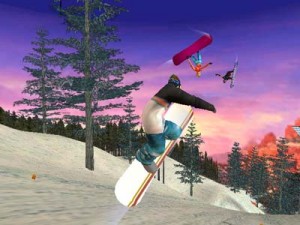 Another new feature to the sequel is the idea of rivalries. Coming into play in the World Circuit career-style mode, players could build up both positive and negative relationships with other riders as they progress. You could become friends with AI riders, who would therefore react well to you in races, and leave you be, or if you constantly attack racers or cause them trouble, the two of you might become rivals, and your enemy will make a concerted effort to knock you off your board and make sure you don’t come away with a victory. This added another level of competition to the career mode, and a vicious edge to what was, at heart, a colourful and light-hearted game. This meant that it was wise to manage your relationships and not freely pick on people, as this would make your job a lot harder.
Another new feature to the sequel is the idea of rivalries. Coming into play in the World Circuit career-style mode, players could build up both positive and negative relationships with other riders as they progress. You could become friends with AI riders, who would therefore react well to you in races, and leave you be, or if you constantly attack racers or cause them trouble, the two of you might become rivals, and your enemy will make a concerted effort to knock you off your board and make sure you don’t come away with a victory. This added another level of competition to the career mode, and a vicious edge to what was, at heart, a colourful and light-hearted game. This meant that it was wise to manage your relationships and not freely pick on people, as this would make your job a lot harder.
 It was features such as these that put the game head and shoulders above the competition. 1080 on the Nintendo 64 was the benchmark previously, set for technically accurate snowboarding, where you needed precision and to learn the courses, in order to triumph. That was all very well and good, but it didn’t fit very well with the extreme image of the adrenaline junkies who take part in the sport. SSX Tricky captured the idea that the sport was risky, intense and unlike anything else. Sure, the moves you would pull off in-game were often physically impossible for real athletes, but videogaming is escapism at the end of the day, and an arcade alternative was just the medicine. EA Sports BIG picked a great title to become the poster child for the brand, a bold, brash title, that was out-and-out fun.
It was features such as these that put the game head and shoulders above the competition. 1080 on the Nintendo 64 was the benchmark previously, set for technically accurate snowboarding, where you needed precision and to learn the courses, in order to triumph. That was all very well and good, but it didn’t fit very well with the extreme image of the adrenaline junkies who take part in the sport. SSX Tricky captured the idea that the sport was risky, intense and unlike anything else. Sure, the moves you would pull off in-game were often physically impossible for real athletes, but videogaming is escapism at the end of the day, and an arcade alternative was just the medicine. EA Sports BIG picked a great title to become the poster child for the brand, a bold, brash title, that was out-and-out fun.
SSX Tricky is still widely available from second-hand game retailers. The new SSX re-boot launches today, and you can see the GodisaGeek.com review here. The God is a Geek Retro Corner is part of “Feature Friday” and will return on the first Friday of next month. You can see previous entries into the GodisaGeek Retro Corner by clicking here.





